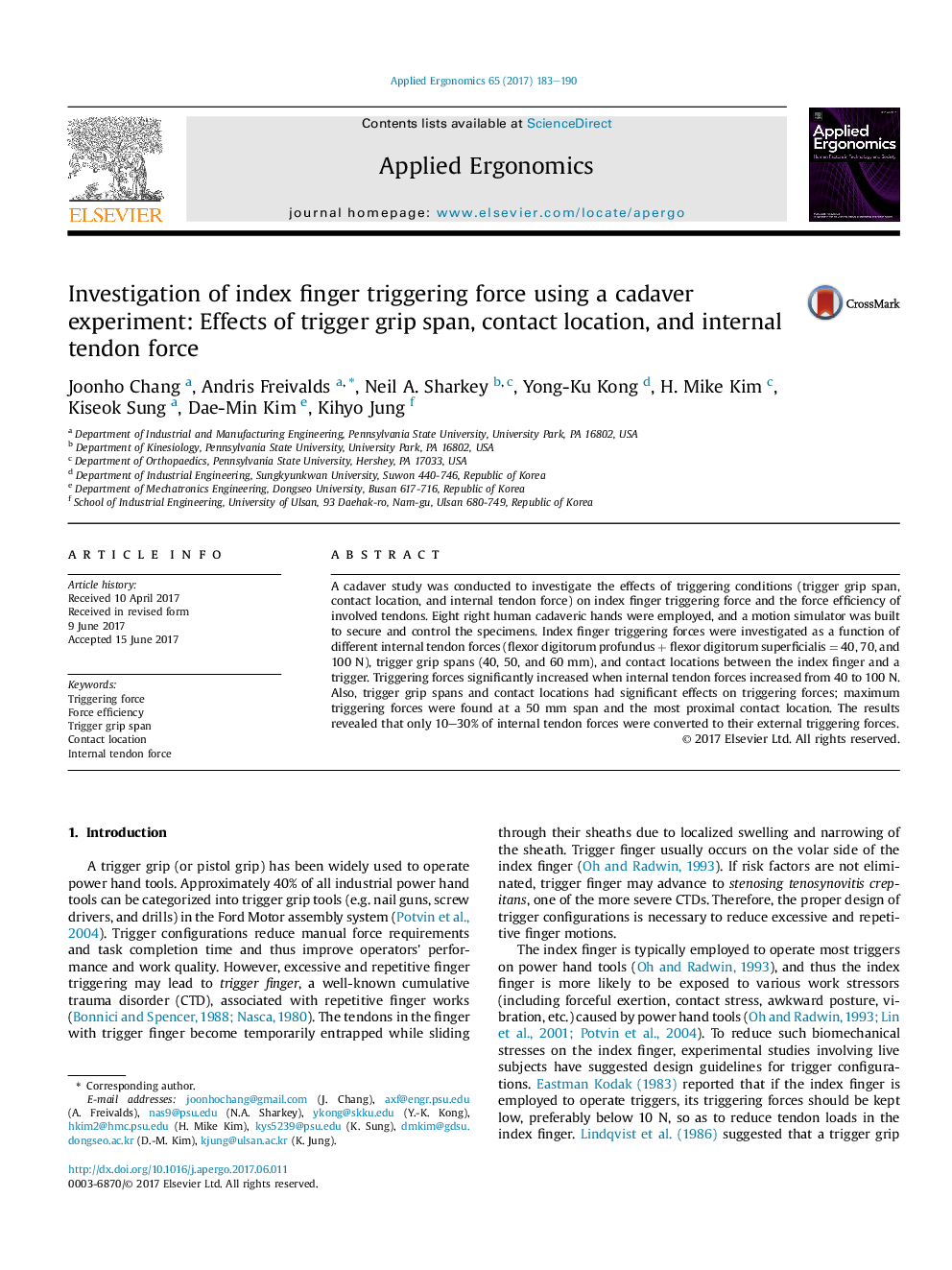| Article ID | Journal | Published Year | Pages | File Type |
|---|---|---|---|---|
| 4971949 | Applied Ergonomics | 2017 | 8 Pages |
Abstract
A cadaver study was conducted to investigate the effects of triggering conditions (trigger grip span, contact location, and internal tendon force) on index finger triggering force and the force efficiency of involved tendons. Eight right human cadaveric hands were employed, and a motion simulator was built to secure and control the specimens. Index finger triggering forces were investigated as a function of different internal tendon forces (flexor digitorum profundus + flexor digitorum superficialis = 40, 70, and 100 N), trigger grip spans (40, 50, and 60 mm), and contact locations between the index finger and a trigger. Triggering forces significantly increased when internal tendon forces increased from 40 to 100 N. Also, trigger grip spans and contact locations had significant effects on triggering forces; maximum triggering forces were found at a 50 mm span and the most proximal contact location. The results revealed that only 10-30% of internal tendon forces were converted to their external triggering forces.
Related Topics
Physical Sciences and Engineering
Computer Science
Human-Computer Interaction
Authors
Joonho Chang, Andris Freivalds, Neil A. Sharkey, Yong-Ku Kong, H. Mike Kim, Kiseok Sung, Dae-Min Kim, Kihyo Jung,
